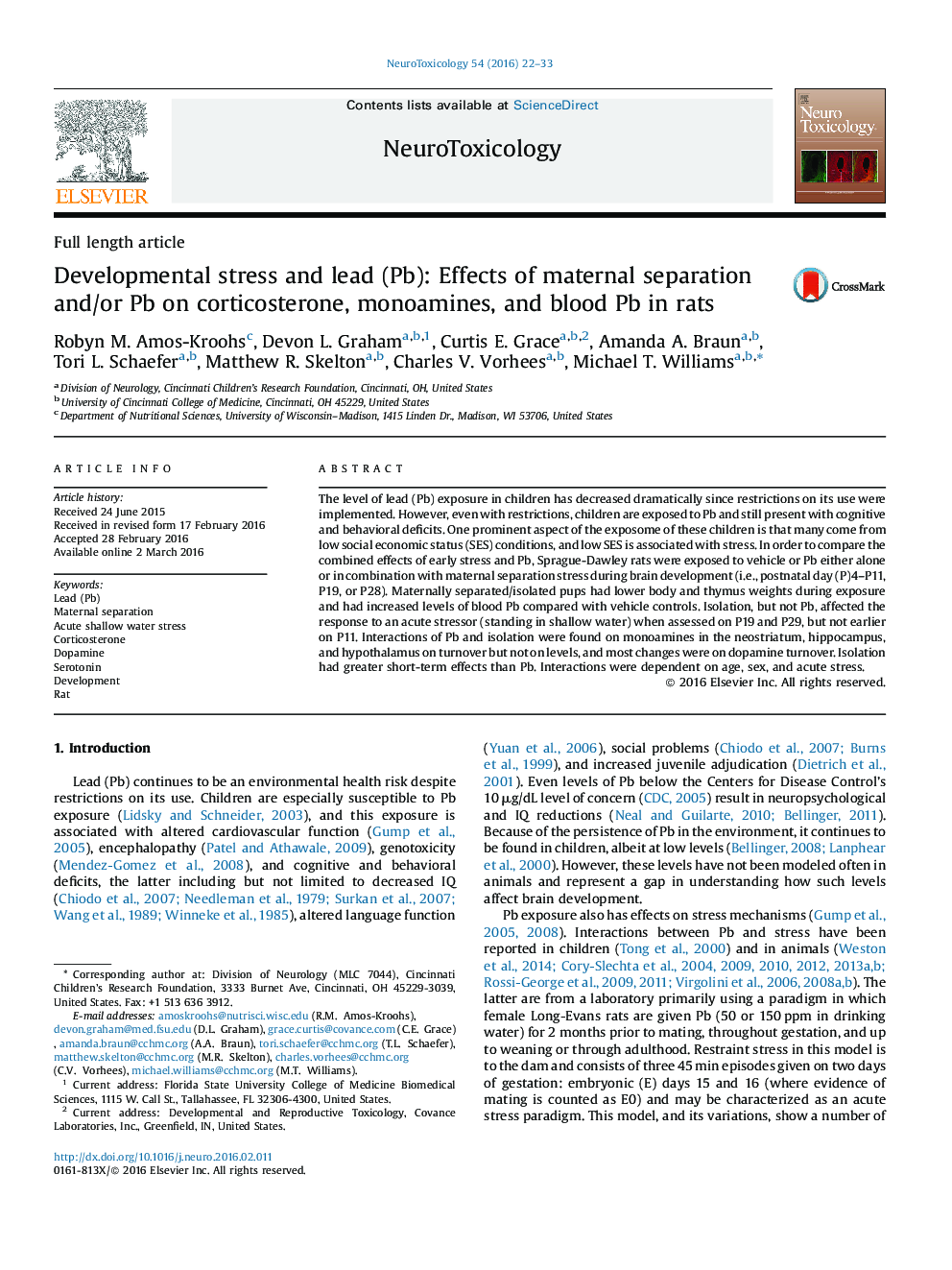| Article ID | Journal | Published Year | Pages | File Type |
|---|---|---|---|---|
| 5854716 | NeuroToxicology | 2016 | 12 Pages |
â¢Effects of neonatal Pb, maternal separation and the combination were evaluated.â¢Pups were evaluated on postnatal day 11, 19, and 28.â¢Early stress-Pb interactions were present but complex.â¢Maternal separation, Pb, age, sex, and acute stress interacted on neurotransmitters.â¢Maternal separation reduced body and thymus weight and corticosterone after shallow water stress.
The level of lead (Pb) exposure in children has decreased dramatically since restrictions on its use were implemented. However, even with restrictions, children are exposed to Pb and still present with cognitive and behavioral deficits. One prominent aspect of the exposome of these children is that many come from low social economic status (SES) conditions, and low SES is associated with stress. In order to compare the combined effects of early stress and Pb, Sprague-Dawley rats were exposed to vehicle or Pb either alone or in combination with maternal separation stress during brain development (i.e., postnatal day (P)4-P11, P19, or P28). Maternally separated/isolated pups had lower body and thymus weights during exposure and had increased levels of blood Pb compared with vehicle controls. Isolation, but not Pb, affected the response to an acute stressor (standing in shallow water) when assessed on P19 and P29, but not earlier on P11. Interactions of Pb and isolation were found on monoamines in the neostriatum, hippocampus, and hypothalamus on turnover but not on levels, and most changes were on dopamine turnover. Isolation had greater short-term effects than Pb. Interactions were dependent on age, sex, and acute stress.
